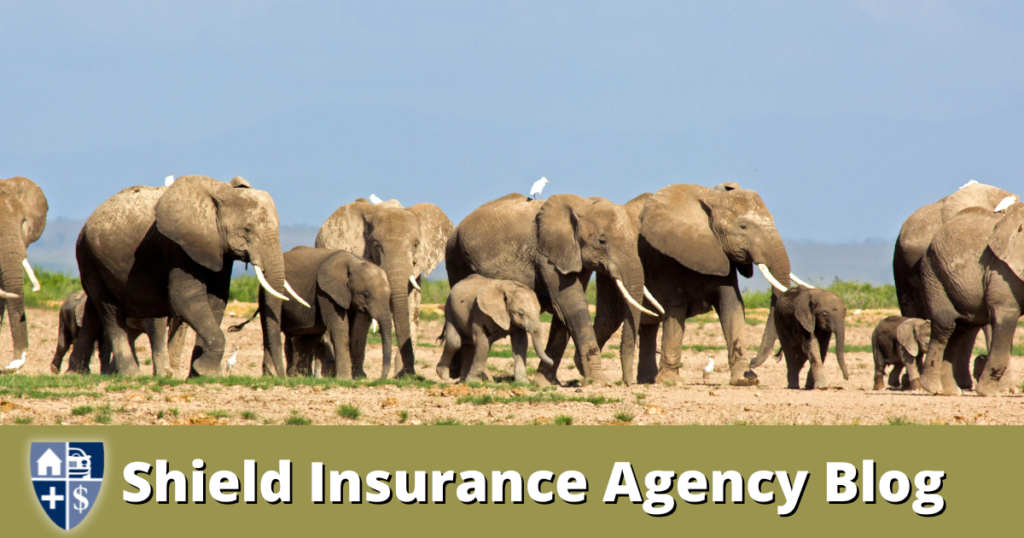Positive News | Martin Wright | September 13, 2023 | biodiversity | Shield Insurance Agency Blog
Is tackling biodiversity loss or climate change more important? The beautiful thing that many people don’t realize is that doing the first will fix the second, writes Martin Wright
Can a grey wolf calm the climate? Can a whale tame the skies?
No, those aren’t the chorus lines of some whimsical 70s folk song. Rather, they’re the sort of legitimate questions arising from a fascinating new study into a previously overlooked, but potentially crucial, benefit of rewilding.
It found that maintaining healthy populations of just nine key wild species (or groups of species) – including elephants and wolves, but also wildebeest, musk ox, and bison, as well as marine fish, whales, sharks, and sea otters – can play a vital role in controlling the carbon cycle on land and sea. How? Because in order for such creatures to thrive, they need a viable habitat. And if that’s conserved, whether in the oceans, forests, grasslands, or swamps, so are the many ways in which its natural properties of sequestering and storing carbon are maintained, too.
The overall impact could be, to put it mildly, massive. Compiled by 15 scientists from eight different countries, the study concluded that it could collectively enable the capture of 6.41 billion tonnes of carbon dioxide every year. This is equivalent to a cool 95 percent of the total needed to meet the Paris Agreement target of removing enough carbon from the atmosphere to keep global temperature rises below the 1.5C threshold.
The mechanisms by which this can happen are many and varied. Whales, for example, directly store carbon in their bodies, while the (substantial) quantity of whale poo is thought to stimulate the growth of phytoplankton. These in turn sequester shedloads of CO2 – as much as 1.7tn trees, or four Amazon rainforests’ worth.
Other creatures have a less dramatic, but no less beneficial impact. Take wolves. When they were reintroduced into Yellowstone Park in the US in the mid-90s, they triggered an extraordinary array of changes, from the recovery of local woodlands to the revival of populations of beavers, swans, and wildflowers, regenerating a climate-friendly ecosystem.
The study’s leader, Yale School of the Environment’s Professor Oswald Schultz, commented that “wildlife species, throughout their interaction with the environment, are the missing link between biodiversity and climate. This interaction means rewilding can be among the best nature-based climate solutions available to humankind.”
This news couldn’t come at a better time for advocates of a wilder world. Because rewilding’s had a mixed press of late. While many applaud the progress made in places like the Knepp Estate in Sussex, or Wild Ken Hill in Norfolk, others are skeptical. Much, but not all, of that skepticism is unfounded.
Fears that rewilding would harm food security are largely groundless: most nature recovery projects are happening on relatively unproductive land, and the benefits they bring, such as reducing floods, boosting populations of natural pest controllers, and conserving soil, can actually have positive impacts on food production in fields nearby.
At various times, though, sweeping efforts to rewild land or sea, in places as diverse as Wales, Scotland, the Netherlands, and Tanzania, without bringing local people on board, have drawn some understandable criticism. This is why the best nature recovery projects make sure to put humans at the heart of it all.
Read the full story at Positive News
More Blogs by Shield Insurance Agency



















































